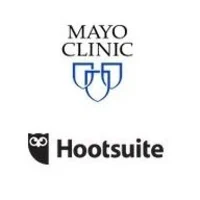Using health IT systems is one way to enhance patient engagement with their own health and wellness. For example, healthcare providers implement patient portals and secure messaging tools that enable patients to view their medical records, request prescriptions and medication refills, access lab results, and communicate with their doctors.
The Centers for Medicare & Medicaid Services (CMS) currently requires healthcare providers to have at least 5 percent of patients view their digital medical records via a patient portal, to qualify for financial incentives under Stage 2 Meaningful Use. However, a new proposal from CMS requires that only one patient views this information through a portal. This proposal comes at a time when only about one-third of patients are offered the ability to view this information and less than half of those offered access their patient portal at least once.
"It almost seems that we have given up on trying to make web portals for electronic health records ubiquitous," José Pagán, director of the Center for Health Innovation at the New York Academy of Medicine, writes in a Health Affairs blog. Designers of human patient portals, he says, may benefit from viewing and examining pet portals, which have more useful features than those of a human health portal. He goes on to describe some of the features of the web portal for the medical records of his cat and dog.
“The web portal login page is modern-looking and professionally designed, with large, readable fonts and uncluttered information about the health of my pets. I can even attach their pictures to facilitate portal use. The opening page is easy to navigate and includes a dashboard that, for example, allows pet owners to track changes in the weight of their pet(s) over time,” Pagán writes.
His pets' portals also include useful information such as each pet’s vaccine history, weight, test results, and prescriptions. All test results are presented with few abbreviations and in brief, easily understood statements. For the few abbreviated technical terms used, the web portal includes examples of “commonly used veterinary abbreviations,” such as FAD (“flea allergy dermatitis”) and MN (“male neutered”).
“In contrast, the web portal for my medical records seems outdated and cluttered. For example, the welcome page has a hyperlink to ‘Schedule appointments for your current health reminders.’ That link then takes me to a list of preventive care reminders for procedures such as ‘Hepatitis C Screen Fpa’ and ‘Colonoscopy,’ but also with a status column stating that these procedures are not due for several years. It is unclear to me why reminders several years before screening tests are actually due may be informative or useful...Moreover, the definition of terms such as “Fpa” is nowhere to be found.”
One good feature of patient portals cited by the director of the Center for Health Innovation is the secure messaging platform that allows patients to communicate with their doctors.
So why do pets have better web portals for medical records than humans? One key issue has to do with legal and regulatory barriers (together with privacy concerns) restricting the types of information that can be provided in a web portal directly to individuals. However, Pagan explains, the format and style in which the online information is presented can be substantially improved even if legal and regulatory barriers are relatively high.
He continues, "People who design web portals for pet medical information — and many others designing online consumer web interface — seem to have a much better understanding of their users as customers. If a web portal is deemed by users to be confusing, complicated, or inconvenient, these consumers can take their money elsewhere."
Source: Health Affairs
Image credit: Flickr.com
The Centers for Medicare & Medicaid Services (CMS) currently requires healthcare providers to have at least 5 percent of patients view their digital medical records via a patient portal, to qualify for financial incentives under Stage 2 Meaningful Use. However, a new proposal from CMS requires that only one patient views this information through a portal. This proposal comes at a time when only about one-third of patients are offered the ability to view this information and less than half of those offered access their patient portal at least once.
"It almost seems that we have given up on trying to make web portals for electronic health records ubiquitous," José Pagán, director of the Center for Health Innovation at the New York Academy of Medicine, writes in a Health Affairs blog. Designers of human patient portals, he says, may benefit from viewing and examining pet portals, which have more useful features than those of a human health portal. He goes on to describe some of the features of the web portal for the medical records of his cat and dog.
“The web portal login page is modern-looking and professionally designed, with large, readable fonts and uncluttered information about the health of my pets. I can even attach their pictures to facilitate portal use. The opening page is easy to navigate and includes a dashboard that, for example, allows pet owners to track changes in the weight of their pet(s) over time,” Pagán writes.
His pets' portals also include useful information such as each pet’s vaccine history, weight, test results, and prescriptions. All test results are presented with few abbreviations and in brief, easily understood statements. For the few abbreviated technical terms used, the web portal includes examples of “commonly used veterinary abbreviations,” such as FAD (“flea allergy dermatitis”) and MN (“male neutered”).
“In contrast, the web portal for my medical records seems outdated and cluttered. For example, the welcome page has a hyperlink to ‘Schedule appointments for your current health reminders.’ That link then takes me to a list of preventive care reminders for procedures such as ‘Hepatitis C Screen Fpa’ and ‘Colonoscopy,’ but also with a status column stating that these procedures are not due for several years. It is unclear to me why reminders several years before screening tests are actually due may be informative or useful...Moreover, the definition of terms such as “Fpa” is nowhere to be found.”
One good feature of patient portals cited by the director of the Center for Health Innovation is the secure messaging platform that allows patients to communicate with their doctors.
So why do pets have better web portals for medical records than humans? One key issue has to do with legal and regulatory barriers (together with privacy concerns) restricting the types of information that can be provided in a web portal directly to individuals. However, Pagan explains, the format and style in which the online information is presented can be substantially improved even if legal and regulatory barriers are relatively high.
He continues, "People who design web portals for pet medical information — and many others designing online consumer web interface — seem to have a much better understanding of their users as customers. If a web portal is deemed by users to be confusing, complicated, or inconvenient, these consumers can take their money elsewhere."
Source: Health Affairs
Image credit: Flickr.com
Latest Articles
healthmanagement, health IT, patient portal system, medical records, EHR, patient engagement
Using health IT systems is one way to enhance patient engagement with their own health and wellness. For example, healthcare providers implement patient portals that enable patients to view their medical records, request prescriptions, and access lab res










